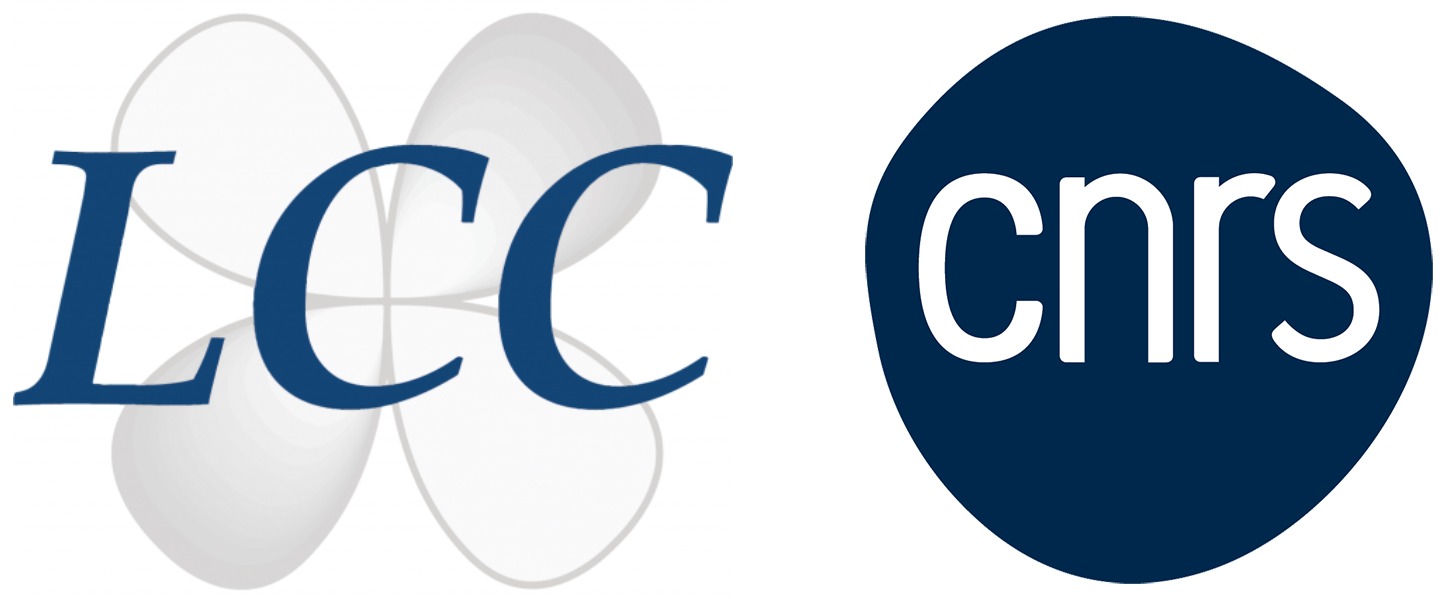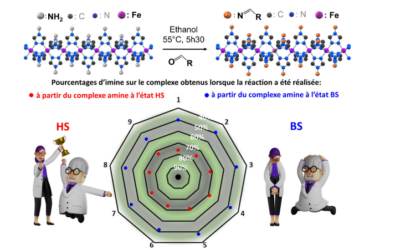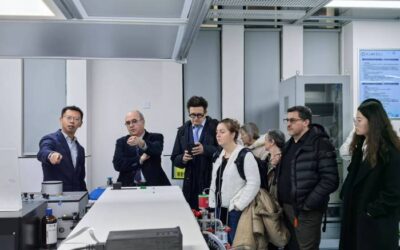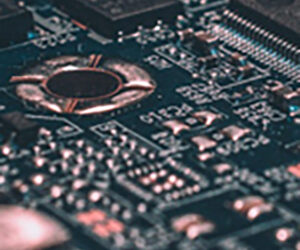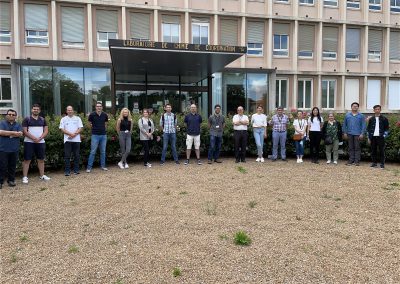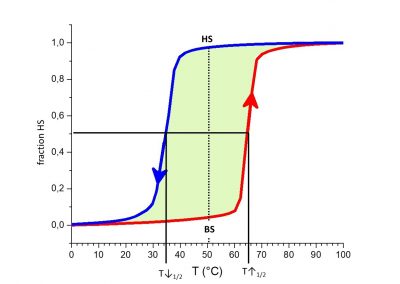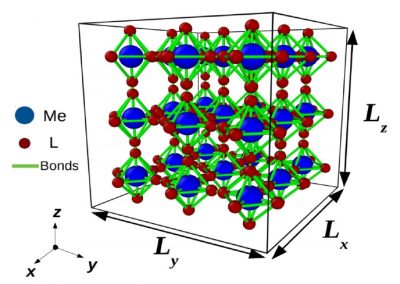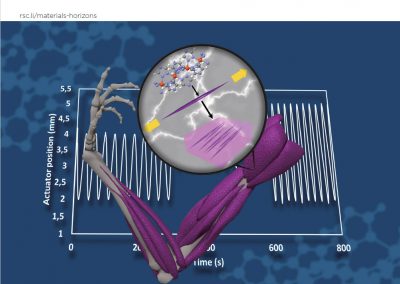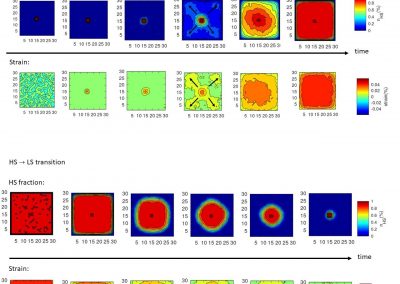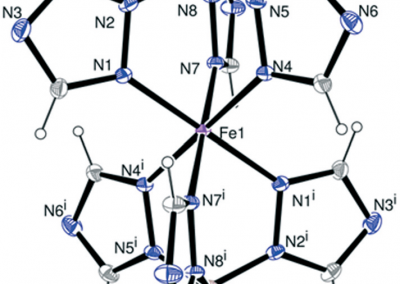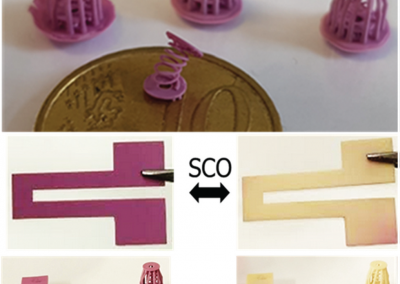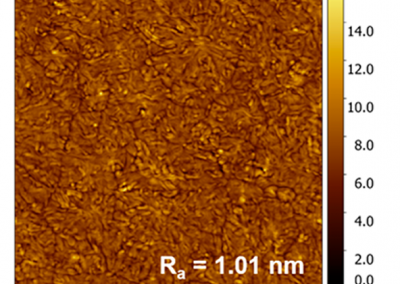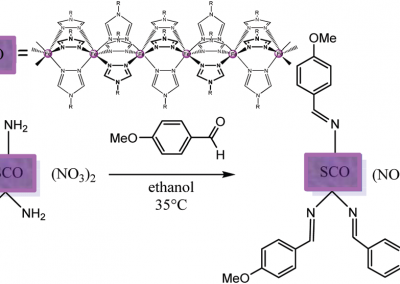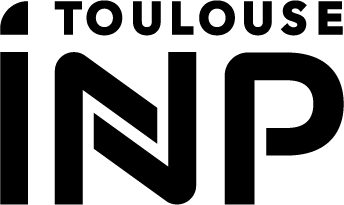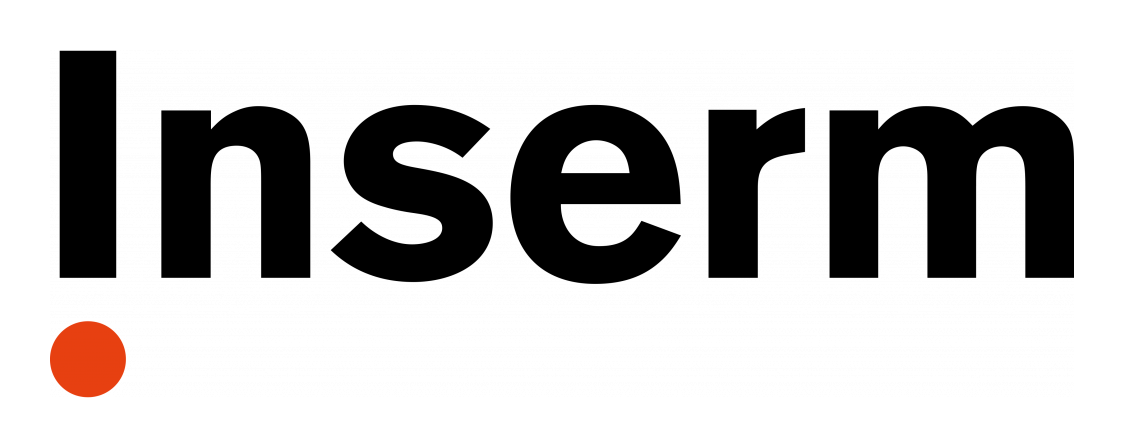LCC
Activités de l’équipe
L’activité de l’équipe Matériaux moleculaires commutables, formant corps entre chimistes, physiciens, théoriciens et nanotechnologues est focalisée sur la bistabilité moléculaire selon une démarche Chimie, Physique, Théorie, Nanotechnologie.
Autrement dit, une démarche allant de la molécule bistable, à la physique de la bistabilité, à la nanoscience de matériaux moléculaires commutables, aux dispositifs intégrés.
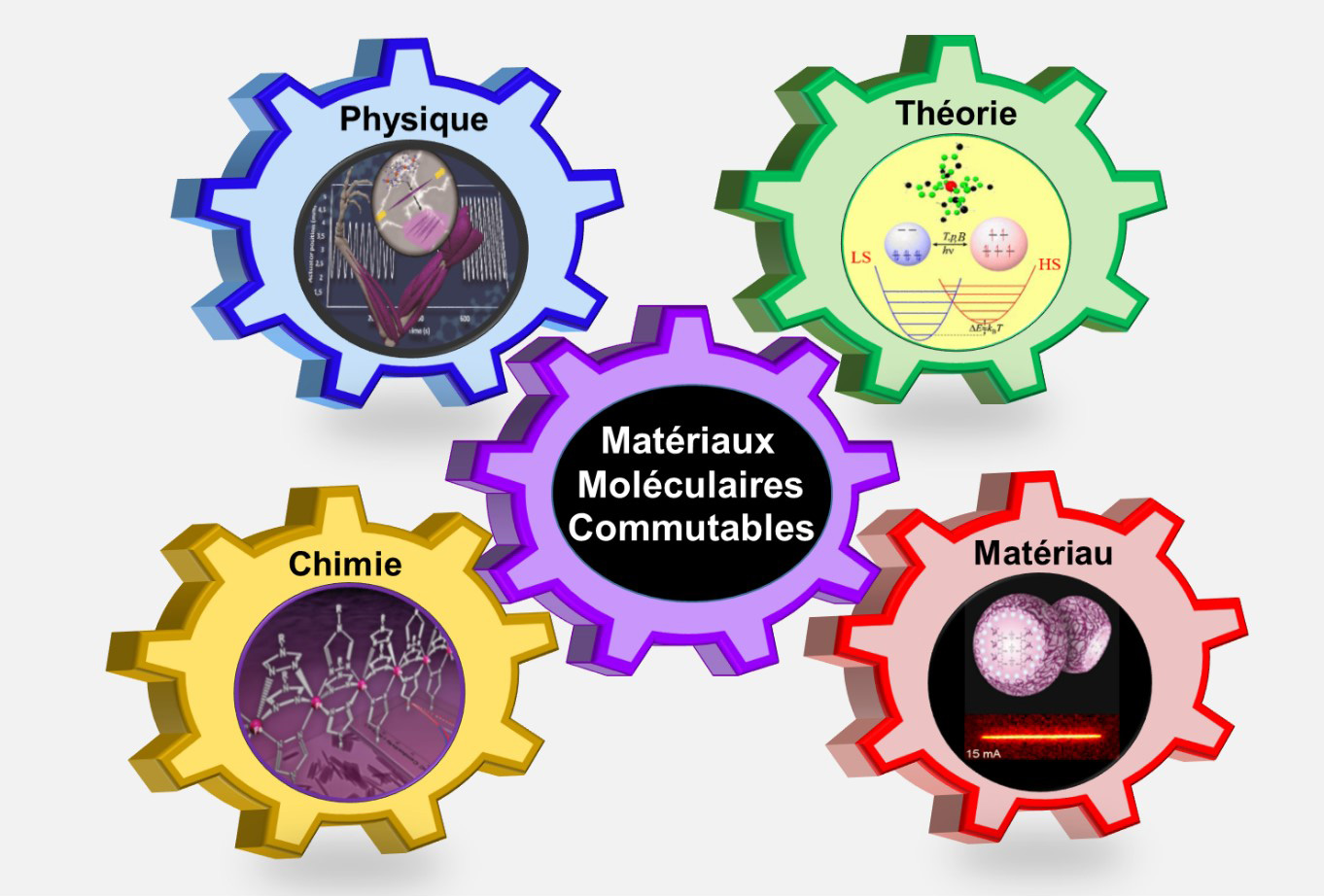
Membres de l’équipe
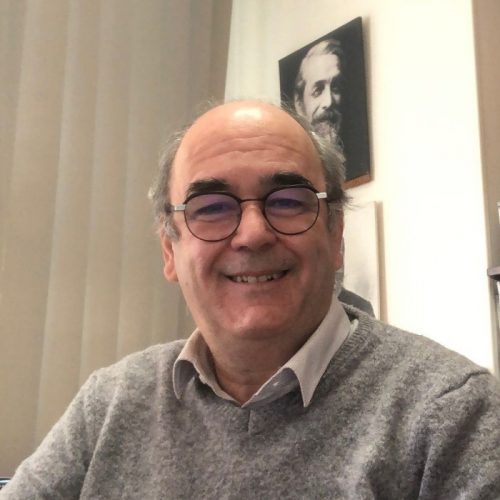
BOUSSEKSOU Azzedine
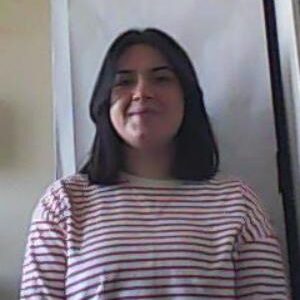
AMRALIYEVA Konul
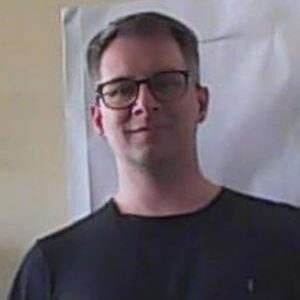
BIELAS Rafal
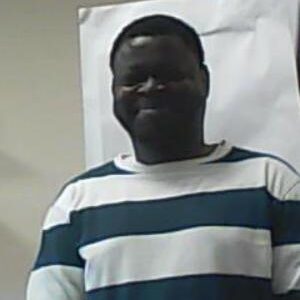
CAPO CHICHI Jesukpego

COBO Saioa
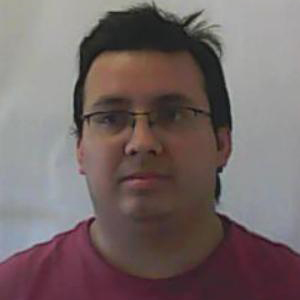
ENRIQUEZ CABRERA Alejandro
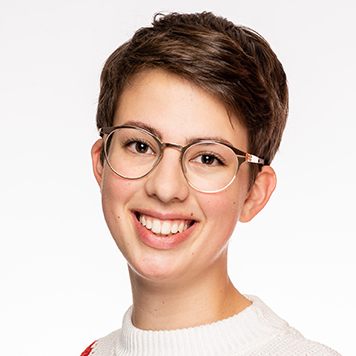
GETZNER Livia

HABIB Michel
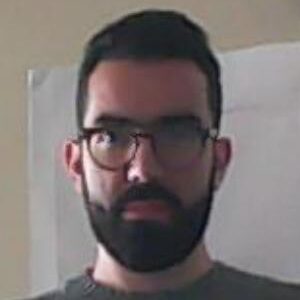
HOBLOS Ayman

HU Qingqing
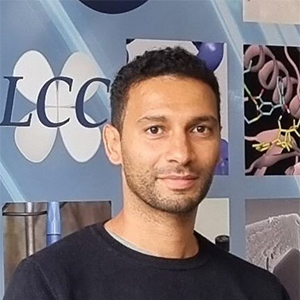
JACOB Kane
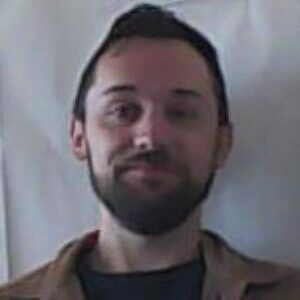
LARRANAGA Melvyn

MASSOU Stephane

MAWASSY Nagham
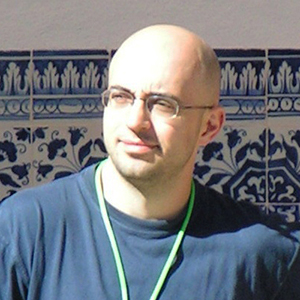
MOLNÁR Gabor
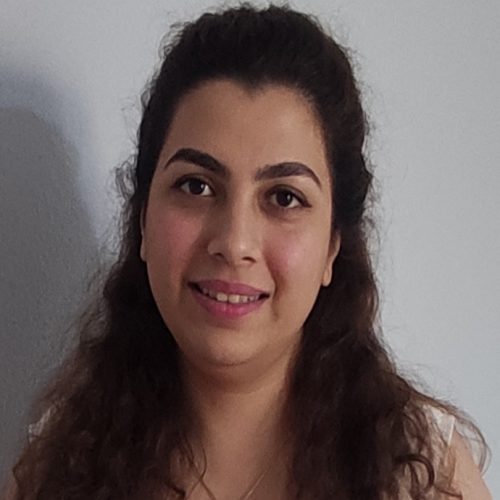
NASIMSOBHAN Maryam
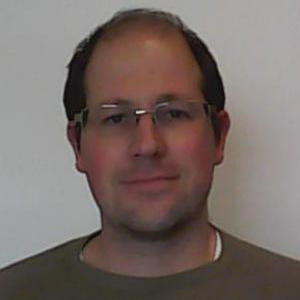
NICOLAZZI William

ORELLANASILLA Alejandra

RANQUET Thomas

REMILI Yasmine
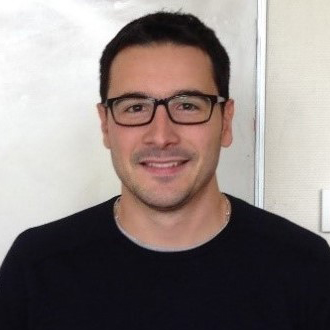
RIDIER Karl
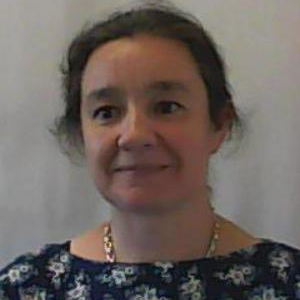
ROUTABOUL Lucie
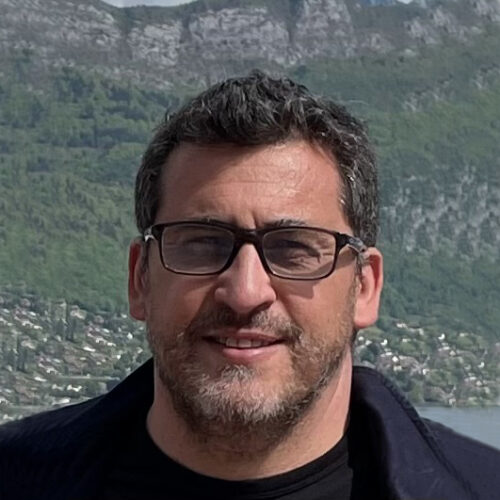
SALMON Lionel

SMAOUI Mohamed
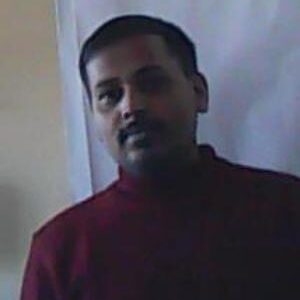
TIWARI Bhawnath
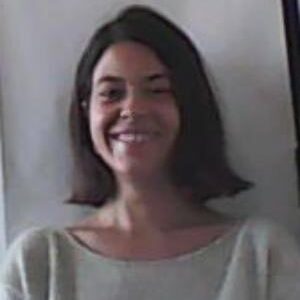
TRAPALI Adelais
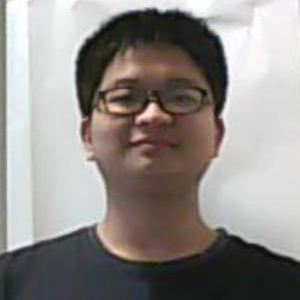
ZHANG Yuteng
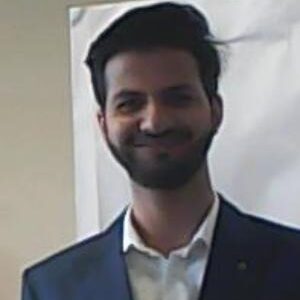
ZULKARNAIN Raja
Aucun résultat trouvé
Thèmes de recherche
Design et conception de matériaux moléculaires bistables à transition de spin
Les chimistes de l’équipe Matériaux Moléculaires Commutables se focalisent sur la synthèse et la caractérisation physico-chimique de complexes de coordination à transition de spin.
Propriétés optiques et photoniques de matériaux moléculaires bistables à transition de spin et leurs applications.
Utiliser le changement des propriétés optiques des (nano-)matériaux bistables à transition de spin pour réaliser des capteurs à lecture optique, et des dispositifs photoniques actifs capables de moduler un signal lumineux.
Propriétés électroniques et spintroniques de matériaux moléculaires bistables à transition de spin et leurs applications.
The present project focuses on the integration on electrode surfaces of a promising family of molecular switches: spin-crossover (SCO) molecules.
Propriétés mécaniques et actionnement
Propriétés mécaniques de matériaux moléculaires bistables à transition de spin et leurs applications (actionnement, NEMS, MEMS, muscles artificiels). Cet axe de recherche est financé par le projet ERC E-MOTION.
Théorie et modélisation du phénomène de la transition de spin.
L’objectif premier de la composante théorique de l’équipe est de simuler, de reproduire et d’interpréter les différents résultats expérimentaux observés dans l’équipe.
Bistabilité et catalyse
La transition de spin représente un moyen très attractif de créer un matériau commutable présentant des applications en électronique, en optique et dans les actionneurs mécaniques.
Actualités de l’équipe
Influence du spin d’un ion métallique sur la réactivité moléculaire
Publié dans Communications Chemistry par Lucie Routaboul et al.
Azzedine Bousseksou invité en Chine avec une délégation du LCC
1rst CCMD Symposium 2024
Coordination Chemistry: from Molecules to Devices
Anhui University China, December 03 – 04, 2024
Un matériau prometteur pour une électronique moléculaire nouvelle génération
Publié dans Nature Communications par Saioa Cobo et al.
Conférence vidéo
Conférence :
Molecular Spin Crossover Phenomenon at the nanoscale: From molecules to devices
Par Azzedine Bousseksou,
directeur de recherche au CNRS, membre de l’académie des sciences, Lauréat du Prix Pierre Süe 2020
Ce chercheur mondialement reconnu dans le domaine de la transition de spin moléculaire et des matériaux moléculaires commutables a marqué son domaine en le faisant volontairement évoluer de l’étude des propriétés de bistabilité à niveau fondamental vers la mise en forme et l’intégration dans des dispositifs pour la photonique, la nanoélectronique et la nanomécanique.
Publications
2025
Cu-histidinyl catalysts for mild and efficient propargylic alcohol carboxylation with CO2
Liu Y., Wang T., Bousada G. M., Salmon L., Subrati A., Moya S., Daro N., Hapiot P., Pozzo J.-L., Yu H., Hamon J.-R., Astruc D.
Coord. Chem. Res. 2025, 1, 100005/1-7.
10.1016/j.cocr.2025.100005 – hal-04931259
Capturing ultrafast molecular motions and lattice dynamics in spin crossover film using femtosecond diffraction methods
Vinci D., Ridier K., Qi F., Ardana-Lamas F., Zalden P., Liu L. C., Eklund T., Jakobsen M. S., Schubert R., Khakhulin D., Deiter C., Bottin N., Yousef H., von Stetten D., Łaski P., Kamiński R., Jarzembska K. N., Wallick R. F., Stensitzki T., van der Veen R. M., Müller-Werkmeister H. M., Molnár G., Xiang D., Milne C., Lorenc M., Jiang Y.
Nat. Commun. 2025, 16(1), 2043/1-12.
10.1038/s41467-025-57202-0 – hal-04980303
Spin-state effect on the efficiency of a post-synthetic modification reaction on a spin crossover complex
Enríquez-Cabrera A., Lai Y., Salmon L., Routaboul L., Bousseksou A.
Commun. Chem. 2025, 8(1), 47/1-11.
10.1038/s42004-025-01425-1 – hal-05063653
Does electronic strong light-matter coupling affect the ground-state energy landscape? An experimental study using spin-crossover molecules
Hoblos A., Calvez S., Salmon L., Molnár G., Ridier K., Bousseksou A.
Phys. Chem. C 2025, 129(6), 3107-3117.
10.1021/acs.jpcc.4c08198 – hal-05064006
Drastic enhancement of electrical conductivity of metal–organic frameworks displaying spin crossover
Lai F., Getzner L., Rotaru A., Molnár G., Cobo S., Bousseksou A.
Chem. Mater. 2025, 37(2), 636-643.
10.1021/acs.chemmater.4c02468 – hal-05064036
Spin crossover composite film as recyclable catalyst for acetalization reaction
Lai Y., Carrasco R., Enríquez-Cabrera A., Routaboul L., Bousseksou A.
Chem. – Eur. J. 2025, 31(19), e202404700/1-9.
10.1002/chem.202404700 – hal-05063744
Optical properties and photonic applications of molecular spin-crossover materials
Ridier K., Hoblos A., Calvez S., Lorenc M., Nicolazzi W., Cobo S., Salmon L., Routaboul L., Molnár G., Bousseksou A.
Coord. Chem. Rev. 2025, 535, 216628/1-35.
10.1016/j.ccr.2025.216628 – hal-05043620
RF dielectric permittivity sensing of molecular spin state switching using a tunnel diode oscillator
Soroceanu I., Diaconu A., Ciobanu V.-G., Salmon L., Molnár G., Rotaru A.
J. Compos. Sci. 2025, 9(1), 49/1-8.
10.3390/jcs9010049 – hal-05063714
Various sizes and shapes of mixed-anion Fe(NH2trz)3(BF4)2−x(SiF6)x/2@SiO2 nanohybrid particles undergoing spin crossover just above room temperature
Yang X., Bielas R., Collière V., Salmon L., Bousseksou A.
Nanomaterials 2025, 15(2), 90/1-11.
10.3390/nano15020090 – hal-05063697
When the study of the post-synthetic modification method on a 1d spin crossover coordination polymer highlights its catalytic activity
Lai Y., Enríquez-Cabrera A., Ronci A., Salmon L., Routaboul L., Bousseksou A.
Chem. – Eur. J. 2025, 31(9), e202403412/1-13.
10.1002/chem.202403412 – hal-04816068
Investigation of the effect of ferroelectric polarization on the spin state of spin crossover complexes embedded in a piezopolymer matrix
Soroceanu I., Kulkarni O., Dantras E., Rotaru A., Salmon L., Molnár G., Bousseksou A.
Chem. Phys. Lett. 2025, 859, 141775/1-5.
10.1016/j.cplett.2024.141775 – hal-04814581
2024
Electron-transfer-induced structural modification in a thermochromic Hofmann clathrate derivative
Getzner L., Remili Y., Ziani Z., Vendier L., Molnár G., Cobo S., Bousseksou A.
Inorganic Chemistry 2024, 63(50), 23503-23508.
https://doi.org/10.1021/acs.inorgchem.4c04155
https://hal.science/hal-04816007
When the study of the post-synthetic modification method on a 1d spin crossover coordination polymer highlights its catalytic activity
Lai Y., Enríquez-Cabrera A., Ronci A., Salmon L., Routaboul L., Bousseksou A.
Chemistry – A European Journal 2024, e202403412/1-13.
https://doi.org/10.1002/chem.202403412
https://hal.science/hal-04816068
Spin-state switching of spin-crossover complexes on Cu(111) evidenced by spin-flip spectroscopy
Johannsen S., Robles R., Weismann A., Ridier K., Berndt R., Gruber M.
Angewandte Chemie, International Edition 2024, 63(51), e202411865/1-9.
https://doi.org/10.1002/anie.202411865
https://hal.science/hal-04316911
Hofmann clathrates: A “blue box” approach to modulate spin-crossover properties
Getzner L., Vendier L., Molnár G., Rotaru A., Cobo S., Bousseksou A.
Angewandte Chemie, International Edition 2024, 63(46), e202412525/1-7.
https://doi.org/10.1002/anie.202412525
https://hal.science/hal-04761740
Electrical sensing of molecular spin state switching in a spin crossover complex using an organic field-effect transistor
Zhang Y., Alavi S. E., Soroceanu I., Kamau D. W., Rotaru A., Séguy I., Salmon L., Molnár G., Bousseksou A.
Advanced Electronic Materials 2024, 11(5), 2400590/1-8.
https://doi.org/10.1002/aelm.202400590
https://hal.science/hal-04761827
Gradual spin crossover behavior encompasing room temperature in an iron(ii) complex based on a heteroscorpionate ligand
Horniichuk O. Y., Vendier L., Salmon L., Bousseksou A.
Dalton Transactions 2024, 53(41), 17083-17096.
http://dx.doi.org/10.1039/D4DT02244K
https://hal.science/hal-04761448
Deciphering the unusual pressure-induced electron transfer in the molecular switch {[Fe(Tp)(CN)3]2[Co(vbik)2]2}·(BF4)2·2MeOH
Xu B., Li Y., Baptiste B., Chamoreau L.-M., Paliwoda D., Mi S., Molnár G., Boukheddaden K., Lescouëzec R.
Chemistry of Materials 2024, 36(18), 8990–9001.
https://doi.org/10.1021/acs.chemmater.4c02347
https://hal.science/hal-04693598
Dual luminescent Mn(II)-doped Cu-In-Zn-S quantum dots as temperature sensors in water
Bellatreccia C., Ziani Z., Germinario A., Engelaar S., Battaglia F. P., Gradone A., Villa M., Ceroni P.
Small 2024, 20(48), 2404425/1-9.
https://doi.org/10.1002/smll.202404425
https://hal.science/hal-04693196
Switchable nanoparticles based on Fe(II)-Au(I) spin-crossover coordination polymer
Bibik Y. S., Fritsky I. O., Kucheriv O. I., Marynin A. I., Molnár G., Salmon L., Bousseksou A., Gural’skiy I. A.
Journal of Molecular Structure 2024, 1318(Part 1), 139302/1-8.
https://doi.org/10.1016/j.molstruc.2024.139302
https://hal.science/hal-04693067
Photovoltaic performance, optical current loss simulation, and conductive atomic force microscopy analysis of organic solar cells based on PM6:Y7
Carrillo-Sendejas J. C., Plaza-Martinez A., Maldonado J.-L., Tassé M., Molnár G., Bousseksou A.
ACS Applied Energy Materials 2024, 7(16), 6929-6940.
https://doi.org/10.1021/acsaem.4c00935
https://hal.science/hal-04693038
Self-healing composite polymers based on spin crossover materials for multidirectional preprogrammed actuation
Enriquez-Cabrera A., Yang X., Alavi S. E., Salmon L., Bousseksou A.
ACS Applied Polymer Materials 2024, 6(15), 9364-9374.
https://doi.org/10.1021/acsapm.4c02098
https://hal.science/hal-04693108
Combining electron transfer, spin crossover, and redox properties in metal-organic frameworks
Getzner L., Paliwoda D., Vendier L., Lawson-Daku L. M., Rotaru A., Molnár G., Cobo S., Bousseksou A.
Nature Communications 2024, 15(1), 7192/1-13.
https://doi.org/10.1038/s41467-024-51385-8
https://hal.science/hal-04690598
Transition metal centers with anharmonic elastic interactions in one-dimensional spin-crossover solids
Metatla A., Nicolazzi W., Latelli H., Bousseksou A.
Physica Scripta 2024, 99(9), 095905/1-11.
https://dx.doi.org/10.1088/1402-4896/ad65c2
https://hal.science/hal-04692750
Cu(I)-glutathione assembly supported on ZIF-8 as robust and efficient catalyst for mild CO2 conversions
Wang W., Wang T., Chen S., Lv Y., Salmon L., Espuche B., Moya S., Morozova O., Yun Y., Di Silvio D., Daro N., Berlande M., Hapiot P., Pozzo J.-L., Yu H., Hamon J.-R., Astruc D.
Angewandte Chemie, International Edition 2024, 63(37), e202407430/1-6.
https://doi.org/10.1002/anie.202407430
https://hal.science/hal-04646094
Stereolithography 3D printing of stimuli-responsive spin crossover@polymer nanocomposites with optimized actuating properties
Kulkarni O., Enriquez-Cabrera A., Yang X., Foncy J., Nicu L., Molnár G., Salmon L.
Nanomaterials 2024, 14(15), 1243/1-13.
https://doi.org/10.3390/nano14151243
https://hal.science/hal-04661535
Temporal separation between lattice dynamics and electronic spin-state switching in spin-crossover thin films evidenced by time-resolved X-ray diffraction
Ridier K., Bertoni R., Mandal R., Volte A., Jiang Y., Trzop E., Levantino M., Watier Y., Frey J., Zhang Y., Pezeril T., Cailleau H., Molnár G., Bousseksou A., Lorenc M., Mariette C.
Advanced Functional Materials 2024, 34(41), 2403585/1-10.
https://doi.org/10.1002/adfm.202403585
https://hal.science/hal-04649865
Optical modulation of cell nucleus penetration and singlet oxygen release of a switchable platinum complex
Ziani Z., Cobo S., Berthet N., Royal G.
iScience 2024, 27(1), 108704/1-12.
https://doi.org/10.1016/j.isci.2023.108704
https://hal.science/hal-04574702
Spin crossover in {Fe(pyrazine)[M(CN)4]} (M = Ni, Pt) thin films assembled on fused silica substrates
Lai F., Molnár G., Cobo S., Bousseksou A.
Dalton Transactions 2024, 53(16), 7197-7205.
http://dx.doi.org/10.1039/D4DT00454J
https://hal.science/hal-04549823
Thermo-optical switches based on spin-crossover molecules with wideband transparency
Zhang L., Capo Chichi J. A., Calvez S., Zhang Y., Salmon L., Molnár G., Ridier K., Bousseksou A.
Advanced Optical Materials 2024, 12(17), 2303252/1-12.
https://doi.org/10.1002/adom.202303252
https://hal.science/hal-04549834
Acoustic emissions from spin crossover complexes
Kamel S. M. M., Daróczi L., Tóth L. Z., Beke D. L., Gutiérrez-Juárez G., Cobo S., Salmon L., Molnár G., Bousseksou A.
Journal of Materials Chemistry C 2024, 12(16), 5757-5765.
http://dx.doi.org/10.1039/D4TC00495G
https://hal.science/hal-04529110
Effects of the surface energy and surface stress on the phase stability of spin crossover nano-objects: a thermodynamic approach
Mi S., Ridier K., Molnár G., Nicolazzi W., Bousseksou A.
Nanoscale 2024, 16(14), 7237-7247.
http://dx.doi.org/10.1039/D4NR00477A
https://hal.science/hal-04529149
Room temperature spin crossover properties in a series of mixed-anion Fe(NH2trz)3(BF4)2−x(SiF6)x/2 complexes
Yang X., Enriquez-Cabrera A., Jacob K., Coppel Y., Salmon L., Bousseksou A.
Dalton Transactions 2024, 53(15), 6830-6838.
http://dx.doi.org/10.1039/D4DT00267A
https://hal.science/hal-04529072
All-atom molecular dynamics simulation of the [Fe(pyrazine)] [Ni(CN)4] spin-crossover complex. I. Thermally induced spin transition in the bulk material
Mi S., Molnár G., Ridier K., Nicolazzi W., Bousseksou A.
Physical Review B 2024, 109(5), 054103/1-11.
https://doi.org/10.1103/PhysRevB.109.054103
https://hal.science/hal-04501537
All-atom molecular dynamics simulation of the [Fe(pyrazine)][Ni(CN)4] spin-crossover complex. II. Spatiotemporal study of a bimorph actuator
Mi S., Molnár G., Ridier K., Nicolazzi W., Bousseksou A.
Physical Review B 2024, 109(5), 054104/1-12.
https://doi.org/10.1103/PhysRevB.109.054104
https://hal.science/hal-04501552
2023
Cooperativity and clusters properties in ferromagnetic spin transition systems
Metatla A., Nicolazzi W., Latelli H., Bousseksou A.
Physica Scripta 2023, 98(3), 035026/1-5.
https://dx.doi.org/10.1088/1402-4896/acbbb3
https://hal.science/hal-04668729
Spin crossover in mixed-anion Fe(NH2trz)3(BF4)(SiF6)0.5 crystalline rod-shaped particles: the strength of the solid–liquid post synthetic modification
Yang X., Enriquez-Cabrera A., Toha D., Coppel Y., Salmon L., Bousseksou A.
Dalton Transactions 2023, 52(30), 10828-10834.
http://dx.doi.org/10.1039/D3DT02003G
https://hal.science/hal-04174161
Dramatic acceleration by visible light and mechanism of AuPd@ZIF-8-catalyzed ammonia borane methanolysis for efficient hydrogen production
Kang N., Shen R., Li B., Fu F., Espuche B., Moya S., Salmon L., Pozzo J.-L., Astruc D.
Journal of Materials Chemistry A 2023, 11(10), 5245-5256.
http://dx.doi.org/10.1039/D2TA08396E
https://hal.science/hal-04175636
Fast Au-Ni@ZIF-8-catalyzed ammonia borane hydrolysis boosted by dramatic volcano-type synergy and plasmonic acceleration
Kang N., Wei X., Shen R., Li B., Cal E. G., Moya S., Salmon L., Wang C., Coy E., Berlande M., Pozzo J.-L., Astruc D.
Applied Catalysis B: Environmental 2023, 320, 121957/1-14.
https://doi.org/10.1016/j.apcatb.2022.121957
https://hal.science/hal-04175566
Facile MOF support improvement in synergy with light acceleration for efficient nanoalloy-catalyzed H2 production from formic acid
Liu Y., Fu F., Salmon L., Espuche B., Moya S., Berlande M., Pozzo J.-L., Hamon J.-R., Astruc D.
ACS Applied Materials & Interfaces 2023, 15(19), 23343-23352.
https://doi.org/10.1021/acsami.3c03684
https://hal.science/hal-04115419v1
Reversible switching of strong light–matter coupling using spin-crossover molecular materials
Zhang L., Ridier K., Horniichuk O. Y., Calvez S., Salmon L., Molnár G., Bousseksou A.
Journal of Physical Chemistry Letters 2023, 14(30), 6840-6849.
https://doi.org/10.1021/acs.jpclett.3c01136
https://hal.science/hal-04174168
Synthesis and characterization of highly diluted polyanionic iron(II) spin crossover systems
Moneo-Corcuera A., Nieto-Castro D., Cirera J., Gómez V., Sanjosé-Orduna J., Casadevall C., Molnár G., Bousseksou A., Parella T., Martínez-Agudo J. M., Lloret-Fillol J., Pérez-Temprano M. H., Ruiz E., Galán-Mascarós J. R.
STAR Protocols 2023, 4(3), 102394/1-22.
https://doi.org/10.1016/j.xpro.2023.102394
https://hal.science/hal-04174181
Anisotropic spin-crossover composite actuators displaying pre-programmed movements
Piedrahita-Bello M., Yang X., Alavi S. E., Molnár G., Salmon L., Bousseksou A.
Sensors and Actuators B: Chemical 2023, 393, 134147/1-9.
https://doi.org/10.1016/j.snb.2023.134147
https://hal.science/hal-04132572
Disentangling surface energy and surface/interface stress effects in spin crossover nanomaterials
Fahs A., Mi S., Nicolazzi W., Molnár G., Bousseksou A.
Advanced Physics Research 2023, 2(10), 2200055/1-14.
https://doi.org/10.1002/apxr.202200055
https://hal.science/hal-04113277
Dynamical mechanical analysis and micromechanics simulations of spin-crossover@polymer particulate composites: Toward soft actuator devices
Alavi S. E., Martin B., Zan Y., Yang X., Piedrahita-Bello M., Nicolazzi W., Ganghoffer J.-F., Salmon L., Molnár G., Bousseksou A.
Chemistry of Materials 2023, 35(8), 3276-3289.
https://doi.org/10.1021/acs.chemmater.3c00293
https://hal.science/hal-04104652
Elastic properties of the iron(II)–triazole spin crossover complexes [Fe(Htrz)2trz]BF4 and [Fe(NH2trz)3]SO4
Paliwoda D., Vendier L., Getzner L., Alabarse F., Comboni D., Martin B., Alavi S. E., Piedrahita Bello M., Salmon L., Nicolazzi W., Molnár G., Bousseksou A.
Crystal Growth & Design 2023, 23(3), 1903-1914.
https://doi.org/10.1021/acs.cgd.2c01396
https://hal.science/hal-04008004
Soft actuators based on spin-crossover particles embedded in thermoplastic polyurethane
Zan Y., Piedrahita-Bello M., Alavi S. E., Molnár G., Tondu B., Salmon L., Bousseksou A.
Advanced Intelligent Systems 2023, 5(6), 2200432/1-11.
https://doi.org/10.1002/aisy.202200432
https://hal.science/hal-04008039
Molecular mechanics simulations of lattice dynamical properties of the spin crossover complex [Fe(pyrazine)][Ni(CN)4]
Mi S., Fahs A., Molnár G., Nicolazzi W., Bousseksou A.
Chemical Physics Letters 2023, 811, 140232/1-6.
https://doi.org/10.1016/j.cplett.2022.140232
https://hal.science/hal-0393640
Pyridyl-benzimidazole derivatives decorated with phenylazo substituents and their low-spin iron(ii) complexes: a study of the synthesis, structure and photoisomerization
Orvoš J., Fischer R. A., Brachňaková B., Pavlik J., Moncoľ J., Šagátová A., Fronc M., Kožíšek J., Routaboul L., Bousseksou A., Šalitroš I.
New Journal of Chemistry 2023, 47(3), 1488-1497.
http://dx.doi.org/10.1039/D2NJ04774H
https://hal.science/hal-03936360
Molecular memory near room temperature in an iron polyanionic complex
Moneo-Corcuera A., Nieto-Castro D., Cirera J., Gómez V., Sanjosé-Orduna J., Casadevall C., Molnár G., Bousseksou A., Parella T., Martínez-Agudo J. M., Lloret-Fillol J., Pérez-Temprano M. H., Ruiz E., Galán-Mascarós J. R.
Chem 2023, 9(2), 377-393.
https://doi.org/10.1016/j.chempr.2022.09.025
https://hal.archives-ouvertes.fr/hal-03853896
2022
Cluster approach to ferromagnetic Ising-type model for spin-crossover systems
Metatla A., Nicolazzi W., Latelli H., Bousseksou A.
Chinese Journal of Physics 2022, 75, 226-234.
https://doi.org/10.1016/j.cjph.2021.12.022
https://hal.science/hal-04668763
Accurate measurement of pipe wall reduction: High-precision instrument and minimization of uncertainties
Pham H. Q., Nguyen T. K., Pham Q. N., van Le S., Vu M. H., Truong T. T., Ngo C. V. K., Kim C. G., Wane S., Bousseksou A., Terki F., Tran Q. H.
Measurement 2022, 205, 112190/1-9.
https://doi.org/10.1016/j.measurement.2022.112190
https://hal.science/hal-04668751
High-sensitivity microthermometry method based on vacuum-deposited thin films exhibiting gradual spin crossover above room temperature
Horniichuk O. Y., Ridier K., Zhang L., Zhang Y., Molnár G., Salmon L., Bousseksou A.
ACS Applied Materials & Interfaces 2022, 14(46), 52140-52148.
https://doi.org/10.1021/acsami.2c13834
https://hal.archives-ouvertes.fr/hal-03853995
Post-synthetic modification mechanism for 1D spin crossover coordination polymers
Enriquez-Cabrera A., Getzner L., Salmon L., Routaboul L., Bousseksou A.
New Journal of Chemistry 2022, 46(46), 22004-22012.
http://dx.doi.org/10.1039/D2NJ04015H
https://hal.archives-ouvertes.fr/hal-03790099
Broadband high-contrast visible optical switches based on a spin-crossover material
Calvez S., Camon H., Ridier K., Molnar G., Gauthier-Lafaye O.
Applied Optics 2022, 61(32), 9562-9568.
https://doi.org/10.1364/AO.473176
https://hal.science/hal-03841636
Pressure tuning of coupled structural and spin state transitions in the molecular complex [Fe(H2B(pz)2)2(phen)]
Paliwoda D., Vendier L., Nicolazzi W., Molnár G., Bousseksou A.
Inorganic Chemistry 2022, 61(40), 15991-16002.
https://doi.org/10.1021/acs.inorgchem.2c02286
https://hal.archives-ouvertes.fr/hal-03790163
Switching endurance of the molecular spin crossover complex [Fe(HB(tz)3)2]: From single crystals to thin films and electronic devices
Zhang Y., Zhang L., Ridier K., Salmon L., Séguy I., Molnár G., Bousseksou A.
Materials Advances 2022, 3(22), 8193-8200.
http://dx.doi.org/10.1039/D2MA00802E
https://hal.archives-ouvertes.fr/hal-03790181
Thermal hysteresis of stress and strain in spin-crossover@polymer composites: towards a rational design of actuator devices
Angulo-Cervera J. E., Piedrahita-Bello M., Martin B., Alavi S. E., Nicolazzi W., Salmon L., Molnár G., Bousseksou A.
Materials Advances 2022, 3(12), 5131-5137.
http://dx.doi.org/10.1039/D2MA00459C
https://hal.archives-ouvertes.fr/hal-03708207
Solvatomorphism, polymorphism and spin crossover in bis[hydrotris(1,2,3-triazol-1-yl)borate]iron(II)
Horniichuk O., Ridier K., Molnar G., Kotsyubynsky V., Shova S., Amirkhanov V. M., Gural’skiy I. A., Salmon L., Bousseksou A.
New Journal of Chemistry 2022, 46(24), 11734-11740.
http://dx.doi.org/10.1039/D2NJ01471H
https://hal.archives-ouvertes.fr/hal-03671044
Crystallinity and piezoelectric properties of spray-coated films of P(VDF70-TrFE30): effect of film thickness and spin-crossover nanofillers
Angulo Cervera J. E., Piedrahita-Bello M., Martin B., Dantras E., Nicu L., Leichlé T., Dalla Francesca K., Da Costa A., Ferri A., Desfeux R., Salmon L., Molnar G., Bousseksou A.
Journal of Materials Chemistry C 2022, 10(21), 8466-8473.
http://dx.doi.org/10.1039/D2TC01162J
https://hal.archives-ouvertes.fr/hal-03670058
Sharp volcano-type synergy and visible light acceleration in H2 release upon B2(OH)4 hydrolysis catalyzed by Au-Rh@click-dendrimer nanozymes
Zhao Q., Kang N., Martinez Moro M., Guisasola Cal E., Moya S., Coy E., Salmon L., Liu X., Astruc D.
ACS Applied Energy Materials 2022, 5(3), 3834-3844.
https://doi.org/10.1021/acsaem.2c00286
https://hal.archives-ouvertes.fr/hal-03670088
Robust linear control of a bending molecular artificial muscle based on spin crossover molecules
Tondu B., Piedrahita-Bello M., Salmon L., Molnár G., Bousseksou A.
Sensors and Actuators A: Physical 2022, 335, 113359/1-9.
https://doi.org/10.1016/j.sna.2021.113359
https://hal.archives-ouvertes.fr/hal-03525817
Sequential activation of molecular and macroscopic spin-state switching within the hysteretic region following pulsed light excitation
Ridier K., Nicolazzi W., Salmon L., Molnár G., Bousseksou A.
Advanced Materials 2022, 34(6), 2105468/1-9.
https://doi.org/10.1002/adma.202105468
https://hal.archives-ouvertes.fr/hal-03474591
Effect of the spin crossover filler concentration on the performance of composite bilayer actuators
Piedrahita-Bello M., Zan Y., Enriquez-Cabrera A., Molnár G., Tondu B., Salmon L., Bousseksou A.
Chemical Physics Letters 2022, 793, 139438/1-5.
https://doi.org/10.1016/j.cplett.2022.139438
https://hal.archives-ouvertes.fr/hal-03608746
Design and synthesis of benzothiadiazole-based molecular systems: self-assembly, optical and electronic properties
Miranda-Olvera M., Arcos-Ramos R., Maldonado-Domínguez M., Salmon L., Molnár G., Bousseksou A., del Pilar Carreón-Castro M.
New Journal of Chemistry 2022, 46(11), 4992-5001.
https://dx.doi.org/10.1039/D1NJ04559H
https://hal.archives-ouvertes.fr/hal-03608836
Synthesis, characterization and electrochemical behavior of new bis(fluoroalkyl) ferrocenylphosphonates and their tin tetrachloride complexes
Mechi H., Sanhoury M. A. K., Laribi F., Manoury E., Mastouri M., Raouafi N., Bousseksou A., Dhia M. T. B.
Journal of Organometallic Chemistry 2022, 957, 122178/1-9.
https://doi.org/10.1016/j.jorganchem.2021.122178
https://hal.archives-ouvertes.fr/hal-03576457
2021
Morphological studies of composite spin crossover@SiO2 nanoparticles
Zan Y., Salmon L., Bousseksou A.
Nanomaterials 2021, 11(12), 3169/1-12.
https://doi.org/10.3390/nano11123169
https://hal.archives-ouvertes.fr/hal-03474626
Pressure gradient effect on spin-crossover materials: Experiment vs theory
Rusu I., Manolache-Rusu I. C., Diaconu A., Palamarciuc O., Gural’skiy I. A., Molnar G., Rotaru A.
Journal of Applied Physics 2021, 129(6), 064501/1-7.
https://doi.org/10.1063/5.0042582
https://hal.archives-ouvertes.fr/hal-03179332
Colossal expansion and fast motion in spin-crossover@polymer actuators
Piedrahita-Bello M., Angulo-Cervera J. E., Enriquez-Cabrera A., Molnár G., Tondu B., Salmon L., Bousseksou A.
Materials Horizons 2021, 8(11), 3055-3062.
http://dx.doi.org/10.1039/D1MH00966D
https://hal.archives-ouvertes.fr/hal-03375327
Planar Hall sensor for quantitative measurement of pipe wall thickness reduction based on the magnetic flux density method
Pham H.-Q., Nguyen T.-K., Pham Q.-N., Le V.-S., Vu M.-H., Truong T.-T., Nguyen V.-T., Bousseksou A., Wane S., Terki F., Tran Q.-H.
Measurement 2021, 182, 109782/1-9.
https://doi.org/10.1016/j.measurement.2021.109782
https://hal.archives-ouvertes.fr/hal-03285765
Rip it off: Nitro to nitroso reduction by iron half-sandwich complexes
Korb M., Hosseini Ghazvini S. M. B., Moggach S. A., Meunier J.-F., Bousseksou A., Low P. J.
Inorganic Chemistry 2021, 60(7), 4986-4995.
https://doi.org/10.1021/acs.inorgchem.1c00042
https://hal.archives-ouvertes.fr/hal-03225433
Influence of the ultra-slow nucleation and growth dynamics on the room-temperature hysteresis of spin-crossover single crystals
Hiiuk V. M., Ridier K., Gural’skiy I. A., Golub A. A., Fritsky I. O., Molnár G., Nicolazzi W., Bousseksou A.
Chemical Physics Letters 2021, 770, 138442/1-6.
https://doi.org/10.1016/j.cplett.2021.138442
https://hal.archives-ouvertes.fr/hal-03179259
Role of surface effects in the vibrational density of states and the vibrational entropy in spin crossover nanomaterials: A molecular dynamics investigation
Fahs A., Nicolazzi W., Molnár G., Bousseksou A.
Magnetochemistry 2021, 7(2), 27/1-11.
https://doi.org/10.3390/magnetochemistry7020027
https://hal.archives-ouvertes.fr/hal-03179059
Complete and versatile post-synthetic modification on iron-triazole spin crossover complexes: A relevant material elaboration method
Enríquez-Cabrera A., Ridier K., Salmon L., Routaboul L., Bousseksou A.
European Journal of Inorganic Chemistry 2021, 2021(21), 2000-2016.
https://doi.org/10.1002/ejic.202100090
https://hal.archives-ouvertes.fr/hal-03225058
Water soluble iron-based coordination trimers as synergistic adjuvants for pancreatic cancer
Cordani M., Resines-Urien E., Gamonal A., Milán-Rois P., Salmon L., Bousseksou A., Costa J. S., Somoza Á.
Antioxidants 2021, 10(1), 66/1-14.
https://doi.org/10.3390/antiox10010066
https://hal.archives-ouvertes.fr/hal-03178953
Spin crossover metal–organic frameworks with inserted photoactive guests: on the quest to control the spin state by photoisomerization
Brachňaková B., Moncoľ J., Pavlik J., Šalitroš I., Bonhommeau S., Valverde-Muñoz F. J., Salmon L., Molnár G., Routaboul L., Bousseksou A.
Dalton Transactions 2021, 50(25), 8877-8888.
http://dx.doi.org/10.1039/D1DT01057C
https://hal.archives-ouvertes.fr/hal-03285860
Investigation of the effect of spin crossover on the static and dynamic properties of MEMS microcantilevers coated with nanocomposite films of [Fe(Htrz)2(trz)](BF4)@P(VDF-TrFE)
Angulo-Cervera J. E., Piedrahita-Bello M., Mathieu F., Leichle T., Nicu L., Salmon L., Molnár G., Bousseksou A.
Magnetochemistry 2021, 7(8), 114/1-9.
https://doi.org/10.3390/magnetochemistry7080114
https://hal.archives-ouvertes.fr/hal-03329761
Photoactuation of micromechanical devices by photochromic molecules
Angulo-Cervera J. E., Piedrahita-Bello M., Brachňaková B., Enríquez-Cabrera A., Nicu L., Leichle T., Mathieu F., Routaboul L., Salmon L., Molnár G., Bousseksou A.
Materials Advances 2021, 2(15), 5057-5061.
http://dx.doi.org/10.1039/D1MA00480H
https://hal.archives-ouvertes.fr/hal-03285954
Supramolecular gel strategy-based nanomaterials with room temperature spin transition
An X., Fang W., Wang Z., Liu K., Ding L., Peng J., Liu T., Peng H., Salmon L., Fang Y.
Colloids and Surfaces A: Physicochemical and Engineering Aspects 2021, 612, 126016/1-6.
https://doi.org/10.1016/j.colsurfa.2020.126016
https://hal.archives-ouvertes.fr/hal-03179202
Partenariats
Cliquez-ici pour consulter les partenaires
Partenaires en France :
- Université de Lille (O. Thomas)
- Université de Reims (G. Lemercier)
- EV Technologies (S. Wane)
- Université de Rennes (M. Lorenc, E. Collet, H. Cailleau, M. L. Buron, L. Ouahab, J. R. Hamon)
- Olikrom (J. F. Letard)
- CNRS Bordeaux (P. Guilloneau, G. Chastanet, P. Rosa, C. Mathonière, E. Freysz)
- Université de Bordeaux (D. Astruc, S. Bonhommeau)
- Université de Toulouse (P. Demont, E. Dantras, I. Dixon, J. C. Micheau, M. Nardonne, N. Guihery. M. Goiran)
- LPCNO Toulouse (J. Carey, S. Tricard, M. Respaud, B. Chaudret)
- LAAS Toulouse (C. Vieu, C. Thibault, L. Malaquin, A. Cerf, C. Bergaud, L. Nicu, T. Leichle, F. Mathieu, I Seguy, B. Tondu, P. Souéres, S. Calvez, H. Camon, O. Gauthier-Lafaye, F. Carcenac)
- CEMES Toulouse (A. Zwick, A. Mlayah, M. Monthioux)
- LCC Toulouse (B. Meunier, A. Robert, D. de Caro, C. Faulmann, I. Malfant, P. Lacroix)
- SUPAERO Toulouse (D. Bajon)
- NOPSYS (J. C. Cau)
- Soleil (J. P. Itié)
- CEA Saclay (G. Chaboussant)
- Université Sorbonnes (T. Mallah, L. Catala, M. L. Boillot, V. Marvaud, R. Lescouezec)
- Université de Nancy (S. Pillet, C. Lecomte, E. Bendeif)
- Université de Dijon (B. Domenichini)
- ESRF (A. Chumakov)
- Université Sorbonnes (T. Mallah, L. Catala, M. L. Boillot, V. Marvaud, R. Lescouezec)
- Université de Grenoble (B. Barbara, S. Cobo)
- ENS Lyon (G. Matouzenko, S. Borshch, D Luneau, N. Brefuel)
- GERFLOR (C. Ferlay)
- ENERSENS (B. Florentino, D. Lesueur)
- Univ. Montpellier (F. Terki, Y. Guari, J. Larionova, G. Felix, J. Long)
Partenaires à l’international
- Irlande du nord : Univ. Belfast (J. Mc Garvey, S. Bell)
- Angleterre : Univ. Kent (H. J. Shepherd), Queen Mary U. London (P. A. Szilagyi)
- Pays-Bas : Univ. Leiden (J. Reedijk, S. Bonnet, J. Haasnoot), Univ. Gröiningen (W. Browne, P. Van Koningsbruggen)
- Belgique : Univ. Louvain (Y. Garcia)
- Suisse : Univ. Geneva (A. Hauser, C. Piguet, L. M. Lawson Daku)
- Espagne : Univ. Valencia (J. A. Real, C. Munoz), Univ Barcelona (D. Ruiz-Molina, G. Aromi), IMDEA Madrid (J. Sanchez Costa, R. Miranda, D. Ecija), ICREA Tarragona (J. R. Galan-Mascaros)
- Allemagne : Univ. Lubeck (H. Paulsen), Univ. Bayreuth (B. Weber, L. Dubrovinsky), Univ. Mainz (V. Ksenofontov)
- Autriche : Univ. Vienna (W. Linert, P. Weinberger)
- Slovaquie : Univ. Bratislava (R. Boca, J Pavlik, I. Salitros)
- Hongrie : Univ. Sopron (L. Csoka), Univ Budapest (Z. Homonnay, G. Vanko, A. Vértes)
- Moldavie : Univ. Kichinev (O. Palamarciuc)
- Roumanie : Univ. Succeava (A. Rotaru), Univ. Iasi (C. Enashescu)
- Italie : Univ. Florence (R. Sessoli), Univ Bologna (M. Cavallini)
- Ukraine : Univ. Kiev (I. Fritsky, I. Guralskiy, Z. Voitenko)
- Russie : Univ. Ekaterinbourg (M. Fedin)
- Etats-Unis : Univ. Nebraska (P. Dowben), Univ. Florida (D. Tallam;, M. Meisel), Univ. Illinois (R. Van der Veen)
- Mexique : UNAM (P. Carreon, V. Velazquez, E. Hernandez, R. Arcos, N. Farfan), CIO Léon (J. L. Maldonado, G. Ramos)
- Maroc : MASCIR Rabat (Z. Sekkat, T. Mahfoud)
- Tunisie : Univ. Monastir (S. Bedoui)
- Algérie : Univ. Oran (M. Belbachir)
- Corée du Sud : Univ. Daejon (C. Kim)
- Japon : Univ. Kyoto (K. Tanaka), Univ. Tokyo (S. Miyashita, S. Ohkoshi), Univ. Toho (T. Kitazawa)
- Chine : Univ. Nanjing (X. Bao), Univ. Guangzhou (M. L. Tong), Univ. Lanzhou (J. Zhao), Univ. Shaanxi (H. Peng)
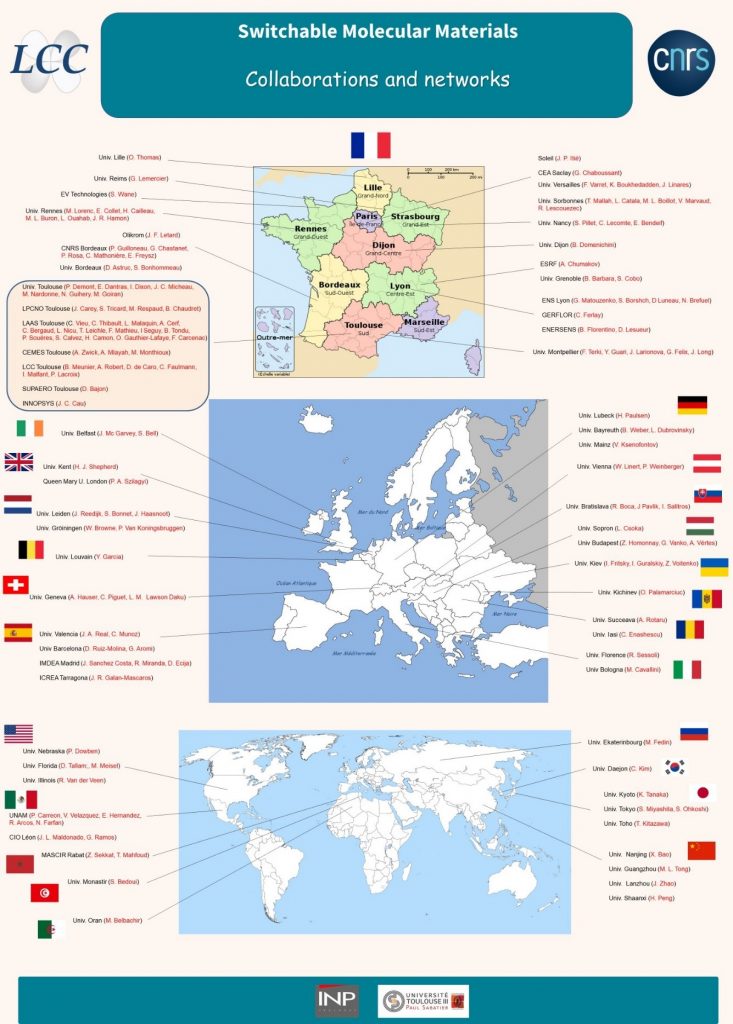
Financements
Cliquez-ici pour consulter les financeurs
Contrats européens et internationaux
– 2021-2026 : Projet ERC E-MOTION : Molecular Materials for a new generation of artificial muscles
– 2021-2024 : Bourse doctorale CSC (Chine) de Yongjian Lai.
– 2021-2024 : Bourse doctorale CSC (Chine) de Fayan Lai.
– 2021-2024 : Bourse doctorale CSC (Chine) de Xinyu Yang.
– 2020-2023 : Bourse doctorale CSC (Chine) de Lijun Zhang.
– 2020-2023 : Bourse doctorale CSC (Chine) de Shiteng Mi.
– 2019-2022 : Bourse doctorale CSC (Chine) de Yue Zan.
– 2019-2022 : Projet ECOS Nord, Mexique, N° M18P01 : 1″Ingénierie de films minces à transition de spin pour des applications en micro(opto)-électromagnétique »
Contrats nationaux (ANR, PHRC, FUI, INCA, etc.)
– 2021-2025 : Electronically active thin-films for new concepts of nano-devices
– 2019-2023 : Salmon L., ANR Actionnement nanomoléculaire pour une nouvelle génération de muscles artificiels – NAGAM (ANR-19-CE09-0008-01)
Archives
Contrats européens et internationaux
– 2018-2021 : Bourse doctorale CSC (Chine) de Yuteng Zhang.
– 2018-2019 : Bourse Master de l’Ambassade de France en Ukraine d’Alina Kandel.
– 2017-2020 : Bourse doctorale du CONACYT (Mexique) de Elias Angulo Cerrera.
– 2018-2019 : Bourse doctorale de l’Université de Bratislava (Slovaquie) de Barbora Brachnakova.
– 2016-2020 : Projet Européen H2020-MSCA-RISE (Multifunctional Spin Crossover Materials).
– 2014-2017 : Bourse doctorale du CONACYT (Mexique) de Dolores Manrique.
– 2014-2017 : Bourse doctorale CSC (Chine) de Changlong Wang.
– 2014-2015 : Bourse Eiffel de Constantin Lefter
– 2013–2015 : Bourse Marie Curie de José Sanchez Costa (FP7-PEOPLE-2012-IEF).
– 2012-2015 : Bourse Marie Curie de Simon Tricard (FP7-PEOPLE-2012-CIG)
– 2012-2015 : Bourse doctorale du CONACYT (Mexique) de Edna Hernandez Gonzalez.
– 2012-2015 : Bourse doctorale CSC (Chine) de Haonan Peng.
– 2012–2017 : LIA France-Mexique Laboratoire de Chimie Moléculaire avec applications dans les Matériaux et la Catalyse.
– 2010–2016 : GDRI Franco-Ukrainien en Chimie Moléculaire
– 2012–2020 : GDR Magnétisme et Commutation Moléculaires II.
Contrats nationaux (ANR, PHRC, FUI, INCA, etc.)
– 2018-2021 : Projet FUI « soutenu par les pôles de compétitivité DERBY (Occitanie) et TENNERDIS (Rhone Alpes) et impliquant quatre industriels (GERFLOR, ENERSENS, MANASLU et COMBO) et financé par BPI France.
– 2018-2019 : Routaboul L., Lauréate pour un contrat postdoctoral du Projet Emergence du CNRS
– 2017-2020 : Salmon L., Lauréat pour un contrat doctoral dans la cadre de l’Appel à Projet de Recherche de L’Université de Toulouse. Projet « AMMA : Actionnement Moléculaire pour une nouvelle génération de Muscles Artificiels »
– 2017-2020 : Contrat doctoral co-financé par la région Occitanie de Mario Piedrahita
– 2016-2018 : Molnar G., Lauréat pour un contrat doctoral dans la cadre de l’Appel à Projet de Recherche de L’Université de Toulouse.
– 2016-2018 : Contrat doctoral co-financé par la région Occitanie de Alin Bas
– 2016-2017 : Molnar G., Lauréat pour un contrat postdoctoral dans la cadre de l’Appel à Projet de Recherche de l’IDEX Toulouse.
– 2016-2017 : Molnar G., Lauréat pour un contrat postdoctoral dans la cadre de l’Appel à Projet de Recherche de la région Midi-Pyrénées.
– 2014–2017 : ANR Blanc SIMI7 NANOHYBRID : Nanostructures hybrides bistables.
– 2013–2016 : ANR Blanc International avec Roumanie SWITCHELEC : Molécules commutables pour la nanoélectronique et la spintronique.
– 2013–2016 : Bourse de doctorat de l’Ambassade de France en Ukraine de Iurii Suleimanov, thèse en cotutelle avec l’Université de Kiev.
– 2010–2014 : ANR P2N THERMOSPIN : Nanoparticules bistables pour l’imagerie thermique à haute résolution spatiale et temporelle.
– 2010–2014 : ANR Blanc SIMI10 CHEMOSWITCH : Couches Minces bistables nano-structurées de polymères de coordination pour des capteurs de gaz photoniques.
– 2010–2014 : ANR Blanc SIMI7 CROSSNANOMAT : Nanomatériaux moléculaires bistables.
Alumnae
Cliquez-ici pour consulter
Devenir de nos Doctorants : thématique et position actuelle
Amel Akou (2009-12), Diffractive gas sensors, CEA Marcoule
Elias Angulo Cerrera (Since 2017), Microactuators, LCC, Toulouse
Carlos Bartual (2007-10), Hofmann chlatrates, Univ. Valencia, Spain
Alin Ciprian Bas (2016-19), Thin films, Univ. Suceava, Romania
Salma Bedoui (2009-12), Dynamical phenomena, Univ. Monastir, Tunesia
Nicolas Bréfuel (2001-04), Pressure effects, CEA Grenoble
Alaa Fahs (Since 2018), Surface and size effects, LCC, Toulouse
Sébastien Bonhommeau (2003-06), Photoswitching, Univ. Bordeaux
Saioa Cobo (2004-07), Spin crossover nano-objects, Univ. Grenoble
Gautier Félix (2011-14), Finite size effects, CNRS Montpellier
Illia Guralskyi (2009-12), Spin crossover nanoparticles Univ. Kiev Ukraine
Thomas Guillon (2004-07), Dielectric properties, Tarbes
Edna M. Hernadez Gonzalez (2011-15), Scanning probe microscopy, UNAM, Mexico
Abdulkader Khaldoun (2011-14), Surface plasmon resonance Univ. Tripoli, Lebanon
Olena Kraieva (2012-15), Nanothermometry, Akka Technologies, Cannes
Constantin Lefter (2013-16), Electronic devices , Renault, Bucharest, Romania
Tarik Mahfoud (2007-11), Electrical properties, MASCIR, Rabat, Marocco
Dolores Manrique (2014-17), Microactuators, CNRS, Toulouse
Mirko Mikolasek (2013-16), Finite size effects, ALCEN, Toulouse
Rosalba Miranda (Since 2019), Organic electronics, LCC, Toulouse
Nawel Ould Moussa (2004-07), Photoswitching phenomena, XLIM, Limoges
Haonan Peng (2012-15), Spin crossover nanoparticles, Shaanxi Normal University, Xi’an, China
Mario Piedrahita-Bello (Since 2017), Artificial muscles, LCC, Toulouse
Carlos M. Quintero Pinzon (2009-12), Fluorescent hybrids, INGETEAM, Toulouse
Sylvain Rat (2014-17), Actuating materials, Max Planck, Berlin, Germany
Iuri Suleymanov (2012-15), Hybrid nanomaterials, CIRIMAT, Toulouse
Petra Szilagyi (2004-07), Mössbauer spectroscopy, Queen Mary University of London, UK
Changlong Wang (2014-17), Nanoparticles, Max Planck, Mulheim, Germany
L’équipe P devant le bâtiment principal du Laboratoire de chimie de coordination au 205, route de Narbonne à Toulouse
Courbes de fraction HS en fonction de la température pour un complexe de Fer II à l’état solide. Les courbes rouge et bleue correspondent respectivement aux transitions BS à HS et HS à BS. Le domaine de bistabilité a été coloré en vert. Les T1/2 correspondent aux températures pour lesquelles la moitié du complexe est à l’état haut spin.
Figure 1 : a) Structure simplifiée d’un film mince à transition de spin : un réseau cubique à motifs octaédrique où chaque atome représentant soit le centre métallique (en bleu) ou les ligands (en rouge) est connecté par des liaisons (en vert) décrites par un champ de forces (énergies potentielles) approprié.
Colossal expansion and fast motion in spin-crossover@polymer actuators L. Salmon, A. Bousseksou et al
Figure 3 : Simulations de Monte Carlo montrant les distributions spatiales de la fraction HS locale moyenne et la trace du tenseur de déformation pendant les relaxations isothermes LS à HS (panneau supérieur) et HS à LS (panneau inférieur)
LCC CNRS
Laboratoire de chimie de coordination du CNRS
205 route de Narbonne, BP 44099
31077 Toulouse cedex 4
France
